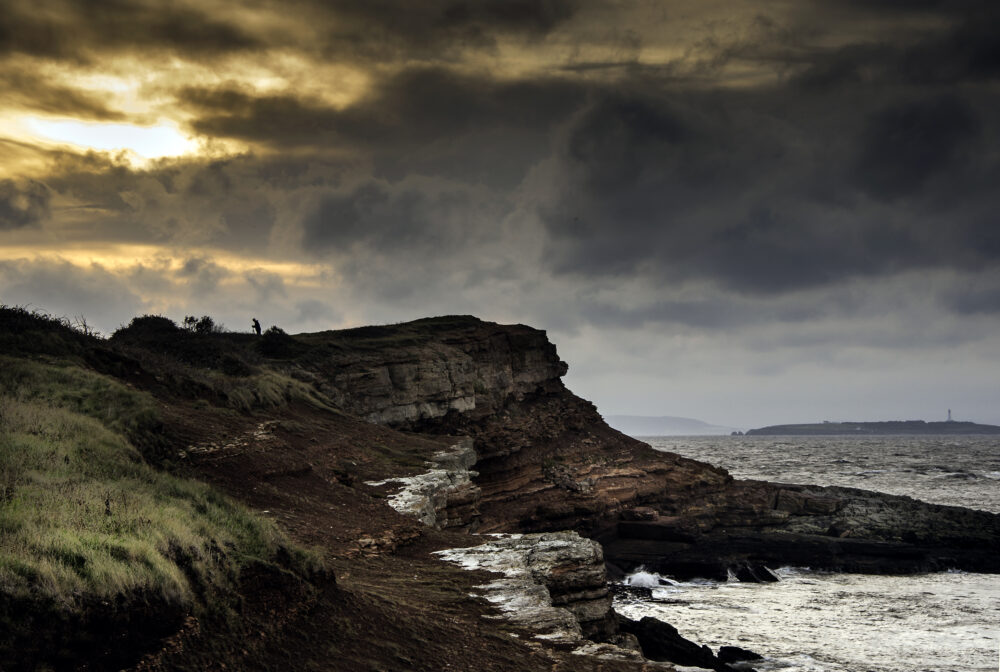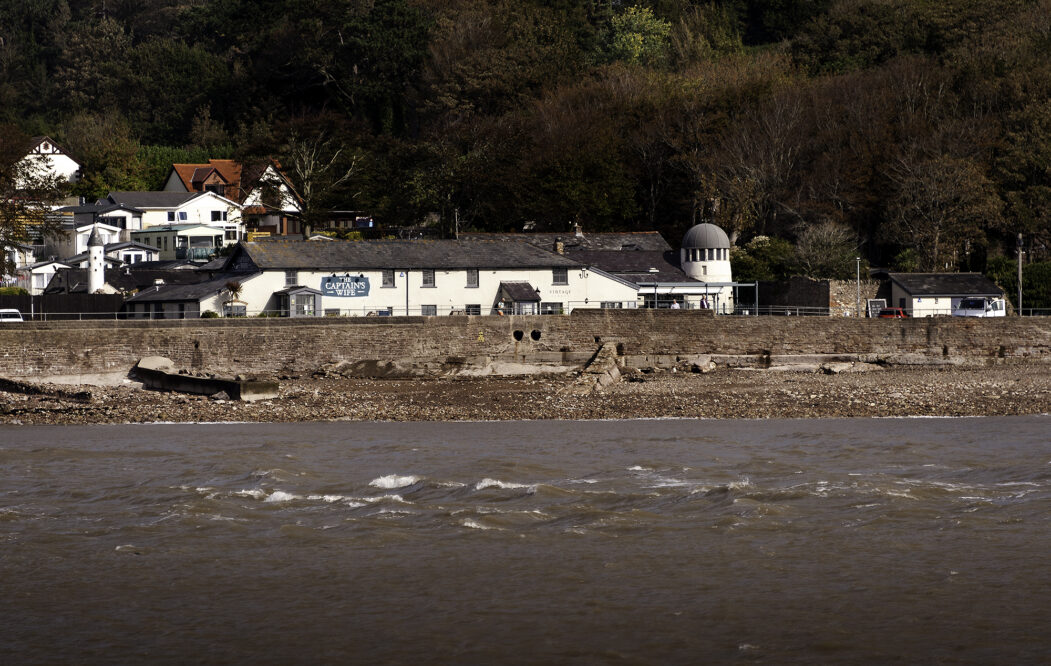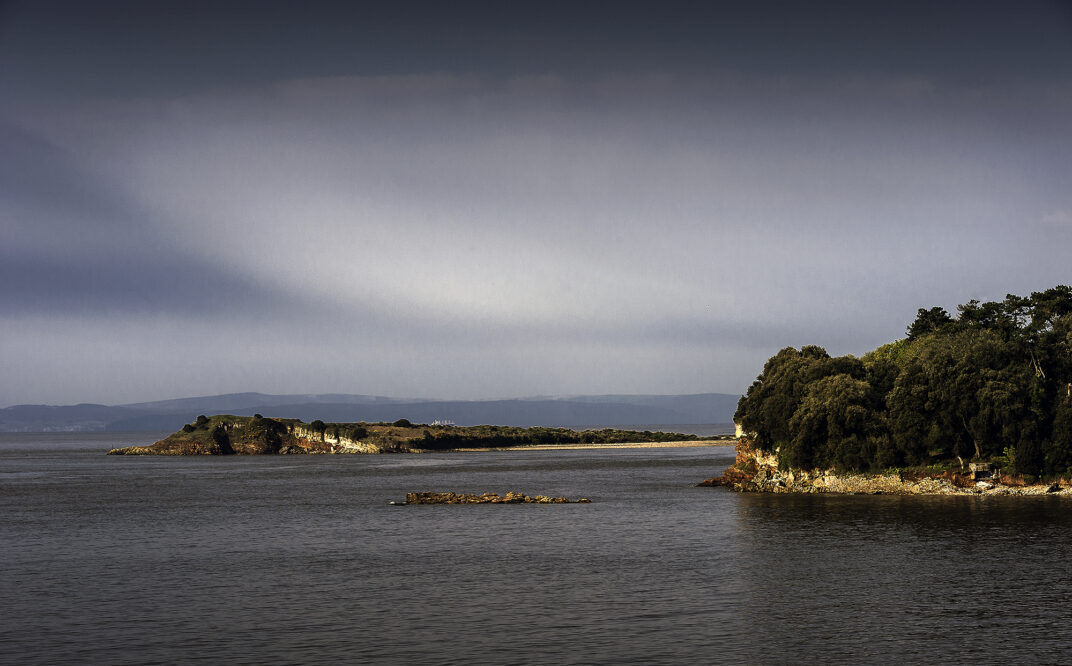Letter from Sully

Tori Chamberlain
I grew up in the seam between two worlds. In the 1970s, fog shrouded more secrets than it does today. I remember waking to the foghorn nearly every morning — that covered-up low moan, like whale song, and a promise of daytime.
It came, as far as I am aware, from Flat Holm Island in the middle of the Bristol Channel, although there was also a lightship in the Channel, called Breaksea, so sometimes it might have been that.
I’d bury my head in the duvet, not wanting to be enveloped by a cold, dark morning, or deal with the mean-faced bully at school. Despite this, I’m still nostalgic for that solid resonance.
It represented safety, I suppose, which is always so enticing; and now I’m tempted to visit Flat Holm this summer to stay at Foghorn Cottage, available for holiday lets since the foghorn’s last call, sometime around 1990.
Bristol Channel
We lived in a 1970s orange brick house, built by my dad, and we could see the muscular brown waters of the Bristol Channel from all the upstairs windows at the front of the house.
He’d planned it that way, but BP Plastics Club across the road planted monstrous leylandii trees that blocked our vista. On one dark winter’s night, somebody, I wonder who, snuck into the field with loppers and brought back our sepia view.
This toast-coloured world, stitched together in the coastal village of Sully in the Vale of Glamorgan was flanked on one side by the salubrious Victorian town of Penarth and on the other, the un-cared for docks town of Barry (much cared for now, of course).

Then, and now, I still don’t know where I quite fit in, always with a toe in the water on each side.
My parents were raised by coal-mining families in The Rhondda amongst mountains dressed in slag heaps but moved to the coast before I was born, wanting something more, something else, but always still themselves — that familiar, singsong-like Rhondda warmth.
But what was I without the accent, without the confidence of a stalwart community around me? I’ve never quite fitted — a square peg in this strangely homogenised, yet diversiform Wales.
What my parents moved to was a village with a moonscape beach — wide flat rocks to clamber upon — red and grey, beige and orange; sea the colour of ochre with waves travelling in all possible directions; an infamous ghostly pub, a treacherous causeway to the sometimes cut off Sully Island, a static caravan park, disconcertingly sullen; a defunct rail line, a ginormous rugby field by the sea, and the tiny church I attended as a reluctant girl guide.
The Captain’s Wife Pub, converted from a row of fishermen’s cottages in 1977, has been a feature of my life, all my life. As a child, I was taken by my parents, and I drank Coca-Cola in hobble-skirt bottles, always with a packet of Golden Wonder crisps.
My mum and dad sat on the beach wall with their pint and a half of Heineken and watched me play amongst the moon rocks and clamber through tunnels that run through the wall — there to drain the spring tides back from the carpark into the sea.
The Captain’s Wife
It was at The Captain’s Wife where I had my first kiss, fell in love many times, and broke up more times than I care to remember!
I also worked behind the bar for a while when in my early 20s and remember meeting Joe Strummer one hot summer afternoon. He sat perched on a barstool, a song in his eyes.
Steeped in folklore, there are at least three different versions of the legend of the captain’s wife. The most likely tale tells us of a seventeenth century sea captain who was deeply in love with his beautiful wife.
A well-known couple, the captain and his wife enjoyed a local celebrity status. On one dreadful occasion, the captain, returning home from a long stint at sea, arrived back to find his wife dead.
He assessed she had likely only died the day before, and in his grief, he swore they would never again be parted. Instead of announcing her death in the community and giving her a Christian burial, he secretly placed her remains in a wooden chest in their cottage.
Sometime later burglars broke in and opened the chest in glee, expecting to find treasure. Instead, they found the decomposing body of the captain’s wife. She is said to haunt the pub to this day, and many claim to have seen her.
I can’t say I ever have, but perhaps she put an omen on my messy love life — hers, of course, so morbidly cut short! I now keep my romantic life far away from The Captain’s Wife!
Opposite the pub is the causeway to Sully Island. The island has sustained life since the bronze age.
It was a stronghold of Caradog’s defensive outposts, and between the sixteenth and seventeenth century piracy and smuggling were rampant and a way of life for the people of The Vale coastline.
Smuggler’s Cove
Sully Island was known as Smuggler’s Cove, an excellent hiding place to stash booty. There’s not much there now, but it’s still well worth a visit on any day of the year, not only to find the remains of the iron age hill fort, but to witness this feral, yet taciturn stretch of the Bristol Channel.
The Bristol Channel holds the title for the second highest tide in the world, the first being in the Bay of Fundy, at Burntcoat Head in Nova Scotia.
Twice a day, the tide swells and rises like a full bath, with the tap still gushing. The mottled waters flood the causeway, and the seabirds put to flight high in the sky.
One doesn’t want to be caught half-way, for the tides are as strong as unspoken resentment. Too many folks have lost their lives this way or found themselves stranded on the island overnight.
Before my grandmother broke her leg and succumbed to osteoporosis, she wrapped me up in waterproofs, and walked me over the inky seaweed until we stood on the far side of the island yelling across to Weston-Super-Mare.
Convinced they could hear us, I thought they were calling back: “hello! Come visit,” but I’ve since realised, behind the insistent waves, the voices I heard were the long call of the tired gulls.

The whole of The Vale coast is Jurassic, and farther down from Sully, towards Barry, dinosaur footprints have been found at Bendrick Rock.
This is one of the UK’s most important coastal geological localities and is listed as both a Site of Special Scientific Interest (SSSI) and a Geological Conservation Review Site (GCR).
The GCR lists the locality twice, for its stratigraphy and for its exceptional fossil reptile tracks.
Between dinosaurs, pirates, and ghosts, this often-unnoticed corner of South Wales — my seam between two worlds — exudes a spell of sorts, a charm beneath the heavy skies, and a wistfulness in the brown swell of this two-toned Channel.
Support our Nation today
For the price of a cup of coffee a month you can help us create an independent, not-for-profit, national news service for the people of Wales, by the people of Wales.





As an (unrepentant!) North Walian, Sully, alas, is quite unknown to me. But it’s brilliantly evoked in this lovely piece of writing. Diolch yn fawr.
My grandparents had a caravan by the Captains Wife, a couple of times almost got caught out by the tides getting back from Sully Island or stuck in the mud at St Marys Well Bay. Well remember the foghorn, maroons being fired to call the lifeboat crew, and low flying Concordes being test flown along the coast like fighter aircraft..
The Bristol Channel will forever be ‘muscular brown’ to me now 🤎
‘ I remember waking to the foghorn nearly every morning — that covered-up low moan, like whale song, and a promise of daytime.’ That for me calls to mind the time, back in the early 1980s when I was living in Pontymister, when we had a vast snowfall which absolutely paralyzed all traffic apart from the local council’s Land Rovers with chains on their wheels. Even the M4 was for a while impassable. The consequence was an absolute silence across the whole area, the like of which I’d never experienced before. And also that, on a misty day in that quiet… Read more »
Been caught out by that tide a few times, lol!